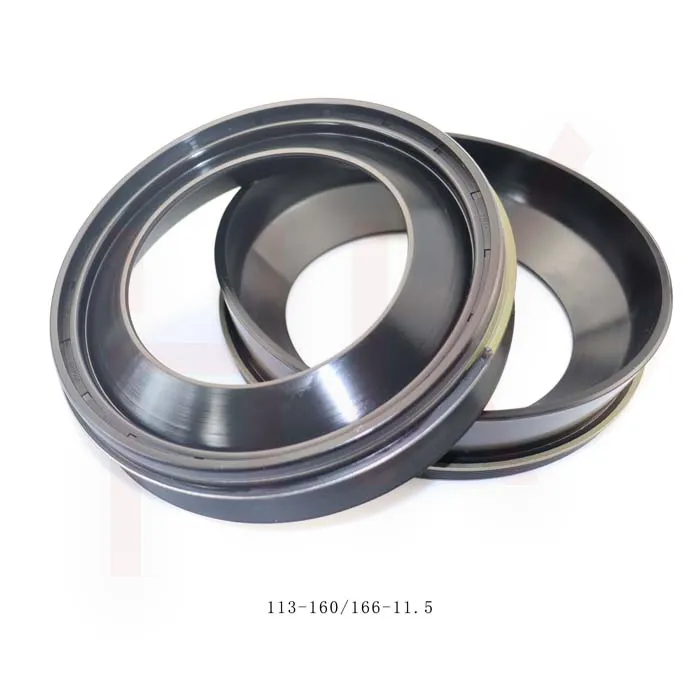Nov . 27, 2024 13:40 Back to list
Hydraulic Seal Restoration Techniques for Enhanced Equipment Performance and Longevity
Hydraulic Seal Repair A Comprehensive Guide
Hydraulic systems are the backbone of many industrial and mechanical operations, delivering power and efficiency in a compact form. However, these systems are not immune to wear and tear, especially the seals that play a vital role in maintaining the integrity of hydraulic fluid systems. Hydraulic seal failure can lead to costly downtime and repair costs, making timely and effective repair crucial for maintaining operational efficiency.
Understanding Hydraulic Seals
Hydraulic seals are designed to prevent the escape of hydraulic fluid, ensuring that the system operates smoothly and efficiently. These seals come in various shapes and materials, tailored to specific applications and operating conditions. Common materials include rubber, polyurethane, and PTFE (Teflon), each offering different levels of resistance to pressure, temperature, and chemical fluids.
Over time, seals can deteriorate due to factors such as exposure to extreme temperatures, abrasive particles, and fluid compatibility issues. This deterioration often manifests as leaks, reduced performance, and increased energy consumption. Recognizing the signs of seal failure early can prevent further damage and save time and resources in repairs.
Signs of Hydraulic Seal Failure
1. Fluid Leakage The most obvious sign of seal failure is the presence of hydraulic fluid leaking from the system. This not only poses environmental hazards but also indicates a loss of system pressure.
3. Increased Noise Unusual noises, such as grinding or whining, can signal that hydraulic components are not operating properly due to poor sealing.
4. Fluctuating Pressure Inconsistent pressure readings can suggest that seals are failing to contain fluid adequately, leading to erratic system behavior.
hydraulic seal repair

Repairing Hydraulic Seals
When it comes to repairing hydraulic seals, it is essential to follow a systematic approach to ensure durability and restore system functionality.
1. Identify the Problem The first step in repairing hydraulic seals is to pinpoint the source of the issue. This may involve visual inspections, pressure tests, and operational diagnostics to ascertain whether the problem lies with the seal or elsewhere in the system.
2. Disassemble the System Carefully disassemble the hydraulic components to gain access to the failed seals. Take note of the orientation and position of each component to facilitate reassembly.
3. Inspect for Damage Examine the seals and surrounding components for damage. Look for signs of wear, tearing, or deformation. It’s crucial to identify whether the failure was a result of the seal itself or if other components contributed to the problem.
4. Replace or Repair Seals In many cases, the most effective solution is to replace the damaged seals with new ones. Ensure that the replacement seals match the specifications for material, size, and type to ensure proper fit and function. In some instances, minor repairs may be possible, such as the use of sealant or resizing; however, these solutions should only be a temporary fix.
5. Reassemble and Test the System After replacing or repairing the seals, carefully reassemble the hydraulic components. Once reassembled, conduct pressure tests and operational checks to ensure that the system is functioning as intended and that no further leaks are present.
6. Maintenance for Longevity To prevent future seal failures, establish a regular maintenance schedule that includes inspections, cleaning, and replacement of worn components. Proper fluid management and monitoring of operating conditions can also prolong the life of hydraulic seals.
Conclusion
In summary, hydraulic seal repair is a critical aspect of maintaining hydraulic systems' efficiency and reliability. By understanding the signs of seal failure, conducting thorough repairs, and implementing a proactive maintenance strategy, operators can minimize downtime and extend the life of their hydraulic systems. Remember that prevention is always better than cure; investing time in maintenance now can save significant costs in repairs and system failures down the line.
-
Reliable Oil Seal Wheel Hub Solutions for Industrial & Automotive Use
NewsNov.17,2025
-
Durable Front Hub Oil Solutions for Industry – HKAiSeal
NewsNov.17,2025
-
Wholesale Hydraulic Pump Motor Seal Kit A4VSO250 | In Stock
NewsNov.17,2025
-
Pump Seal Kits: Essential Components for Industrial Reliability
NewsNov.17,2025
-
TCV Oil Seal - Double-Lip, Spring-Loaded, High Temp & Wear
NewsNov.17,2025
-
Hydraulic Seal Kits: Reliable Solutions for Industrial Equipment
NewsNov.17,2025
-
Combined oil seal 659214 12001903B, fits 119990, NBR OEM
NewsNov.17,2025
Products categories
















